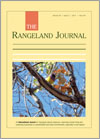RJ16124Frequent fires reduce the nutritional quality of Sorghum stipoideum seed, a keystone food resource for the Gouldian finch (Erythrura gouldiae)
In Australia’s tropical savannas, infrequent fires cause a flush of soil nutrients and an increase in seed quality of annual grasses, upon which the endangered Gouldian finch relies during breeding. By contrast, frequent fires reduce seed quality, causing finches to select breeding sites that have been recently but infrequently burnt. Fine-grained patch-mosaic infrequent burns are essential to maintain the seed nutrition required by the Gouldian finch.




